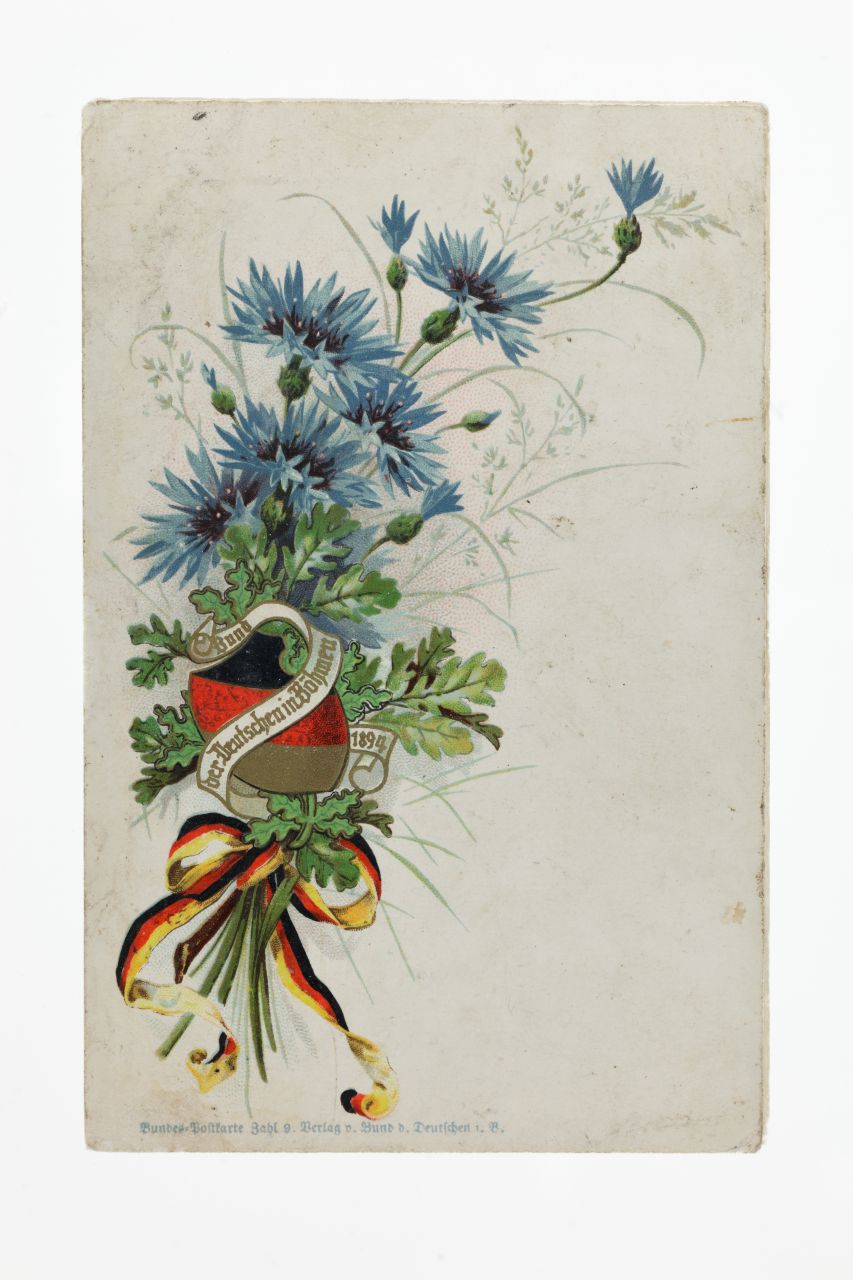Sag mir wo die Blumen sind
instalace
2016
Základem instalace Miroslava Haška je dobová pohlednice. Možná je tento intimní sociální artefakt pouhou startovní pozicí pro rozehrání dalších rovin vyprávění a interpretace. Je to vpravdě interpretace dějinná, dotýkající se také konkrétních historických momentů, nazíraná z jiného úhlu pohledu, zviditelňující skutečnosti a detaily, které v dané době byly upozaděné.
Artefakt Miroslava Haška konfrontuje barvotiskovou pohlednici s motivem kytice tvořené snítkou chrp a dubových ratolestí svázaných německou trikolorou s „konzervovaným“ reálně shodným pugétem. Máme možnost srovnat idealizovaný, romantizující a ideologicky odpovídající motiv na pohlednici s reziduem skutečné kytice tvořené vysušenými torzy přírodnin, naaranžovanou stuhou. Kytice je uschlá, přikrytá skleněným poklopem a tím víc připomíná „relikvii“ – svatou vzpomínku na něco důležitého, zásadního a historicky významného. To se dostává do příkrého rozporu s vlastní intimností pohlednice, která je v instalaci viděna z obou stran a dává tedy nahlédnout i na stranu, kde je místo pro osobní sdělení. Sdělení, snad pozdrav, je ovšem vlivem plynutí času nečitelný a tak ponechává prostor pro tušené příběhy. My dnes vidíme jen zbytky ručně psaného, kudrlinkového písma, části poštovního razítka, ostatní se rozplynulo v běhu času.
Doslovné přepsání metafory, symbolu nebo ustáleného zvyku či stereotypu je pro práci Miroslava Haška příznačné. Podobně samozřejmě a zaujatě čerpá z vlastní rodinné nebo místní historie (oblast severočeských Sudet). Dalším výrazným prvkem jeho tvorby je citlivý přístup k materiálům, z nichž své práce buduje a které jsou velice variabilní (sklo, porcelán, textilie, fotografický obraz nebo video instalace). Autor si pohrává s významovými přesahy (název díla odkazuje k písni s výrazným protiválečným podtextem, interpretované slavnou německou „superstar“ Marlene Dietrich Sag mir wo die Blumen sind), dobovými trendy (česko-německé vztahy a vzájemnost) nebo strategiemi současného umění, které využívají archivní materiály či se přelévají do jiných oblastí (floristika, design).
Mgr. Eva Mráziková
KDTU FUD UJEP
